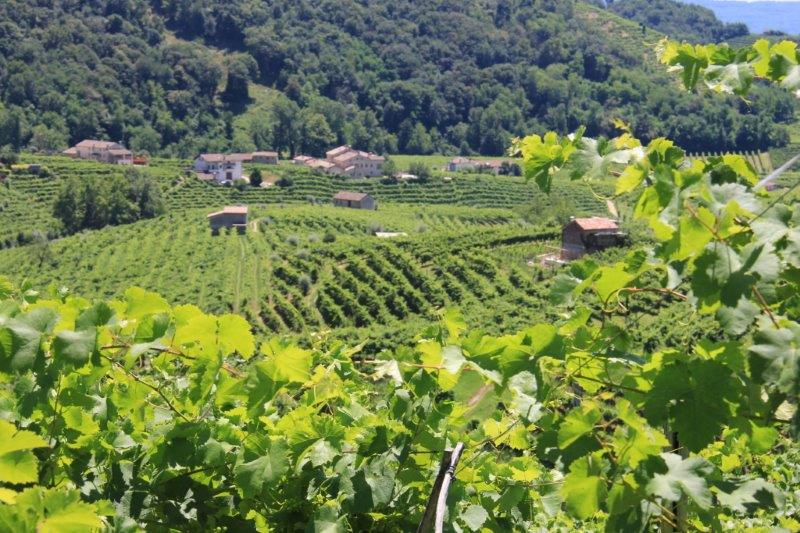 Italian Wine, Grappa and Tiramisu: Unwinding in Veneto
Italian Wine, Grappa and Tiramisu: Unwinding in Veneto
After a long day of sightseeing, it’s time to unwind, Italian style. Here are three classic Italian ways to unwind: Italian Wine, Grappa and Tiramisu.
Starting at about 5:30 or 6 pm, most Italians can be found at their local, or a friend’s house, for an aperitivo. In Veneto, home to many fine food and drink products, an aperitivo or accompaniment to dinner usually consists of one of the following drinks, all of which hail from the Veneto region:
- Prosecco- Italy’s largest wine export by varietal
- Amarone- a very unusual wine, made from dried grapes, but yet not a sweet wine
- Grappa- a well known spirit export, we are going to look at the artisan production of Grappa and the home of Grappa, Bassano del Grappa
And for those of you wondering if we are ever going to feature a dessert, the wait is over, a recipe for an Italian classic, Tiramisu made with Grappa, is at the end of this Italian Wine, Grappa and Tiramisu: Unwinding in Veneto post.
Italian Wine
Italy is a huge wine producer. They are second in the world in wine production, using both volumes and dollars as measurements. (If you are into trivia, Spain is number one.) Chianti is perhaps one of the best known Italian wines, and it is the second largest export varietal, but we are going to talk about the largest export varietal prosecco. Export of prosecco is growing rapidly with over 7% per annum growth in recent years.
45% of all Italian wine production is exported and the United States is the largest export market for Italian wine.
Buying Italian WIne: What the Labels Mean
If you are buying Italian wine, how do you know what you are buying? For those of you just joining us, Europe uses a system known as DOP or Designated Product of Origin, to classify and protect, the production of many artisan products. The DOP system governs both the geographical location and the method of production, and tests the final product for authenticity. For drinks, including wine, the designations used are IGT, DOC, or DOCG, the strictness (and price) increases, with DOCG being the most strict or difficult classification for a producer to obtain. Italians are very proud of the terroir, the climate and the soil where the vines grow, and these designations recognize the terroir as well as the production method.
- Indicazione Geografica Tipica (IGT)- indicates a typical product from a region.
- Denominazione di Origine Controllata (DOC)- governs geographic region, grape varietals and production but the standards are a bit more lenient than DOCG, i.e the geographical region might be larger.
- Denominazione di Origine Controllata e Garantita (DOCG)- These are the strictest guidelines, and the most expensive end product. The geographic authenticity and quality of the wine is tested and certified by a committee (much like the rules governing parmagiano reggiano or traditional balsamic vinegar of Modena production.) DOCG status is difficult to obtain and few producers achieve this standard.
Vino Italy: A Taste of the Wines of Italy
Vino Italy makes an app for your mobile phone: a guide to selecting Italian wines. Listing over 1300 wines there is something for everyone. You can download the app from the Vino Italy site.
If you are heading to the Milan EXPO, Vino Italy has a tasting pavilion in the Italy district. For €10 you get a tasting glass to keep, and a taste of 3 wines. There are over 1300 wines available to try. (Yes it is hard to narrow it down to 3).
There are sommeliers available to help you find something or an app you can use to find something to suit you. We used the sommelier.
It was quite fun. We got to try a few things we wouldn’t otherwise (like a €160 bottle of red wine). You can learn about the region and the varietals. It’s a good thing to do at night after the pavilions have closed.
Prosecco: Italian Sparkling Wine from Veneto
A personal favourite, prosecco is a light, effervescent (bubbly) white wine. Made in a similar, but not the same manner as Champagne. It is not called champagne as it not from the Champagne region in France (DOP).
How Prosecco differs from Champagne: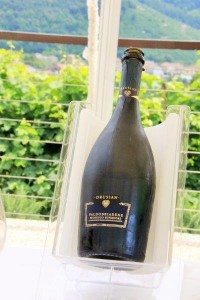
- It is a less expensive option, a good bottle of prosecco will be under $20 USD, while most good champagnes will be over $40 a bottle. So prosecco is a chance to have a bubbly when you would have any other wine, not just special occasions.
- Sparkling wines are fermented twice to achieve the bubbles, for champagne the second fermentation process takes place in the bottle. prosecco’s second fermentation is completed in a large steel vat, then the wine is bottled.
- Prosecco is made from giera grapes, also commonly just called prosecco. Champagne can be made from any of three grapes pinot noir, pinot meunier, or chardonnay.
Prosecco with lots of bubbles is spumante (brut and extra dry varieties), and lightly sparkling is frizzante. Valdobbiadene and Conegliano are two very well known towns for prosecco production (check the labels on the bottle). Over 70 million bottles of prosecco were produced in this region in 2013. Mionetto is the largest exporter of prosecco from Italy to the US. A wine designated as Prosecco di Valdobbiadene Superiore di Cartizze, is a top quality prosecco comparable to a champagne quality and often served on special occasions.
Prosecco is great on its own, in an aperitivo, or paired with food including prosciutto, stuffed mushrooms, stuffed zucchini flowers or squash blossoms, creamy sauces, seafood and spicy asian food. Try finding a bottle, there are several in the the Compass & Fork shop.
Prosecco in Veneto
One of the wines routes created by the Province of Treviso is the Prosecco Route, its official name is a mouthful, the Proseco & Conegliano and Valdobbiadene Hills Wine Route. It is a scenic drive through some of the most beautiful wine country you will find anywhere in the world. The areas near Valdobbiadene, Refrontolo and Conegliano are especially nice. Every where you look, the rolling hills are covered in green, luscious vines and dotted with centuries old Italian homes and wineries. The Prosecco site, features good information about the area, including an app for your mobile, a visitor magazine and map of the area which you can download.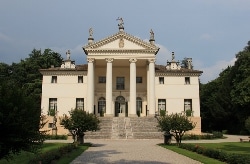
This area covers almost 20 square miles of vines. The hills range from 50 to 500 meters, and the sunniest sections of the hillsides are covered in vines.
The Province of Treviso tourism department publishes a beautiful driving guide to the route (and the other wine routes in the area.) It provides history of the area, facts about the vineyards, and a listing of all the local businesses. We were there at the height of tourist season (which is not the height of wine production season) and many places were unfortunately closed. So phone ahead, to avoid disappointment, if you would like to stop in a particular winery or establishment.
Where to Learn more about Prosecco in Veneto
Two places we recommend within the area: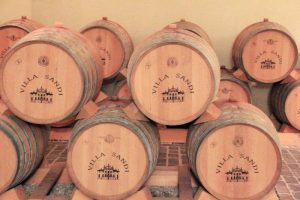
Villa Sandi– Offers tours of the Villa and cellars and you can learn about their operations. The tour includes a tasting of prosecco.You need to make a booking in advance for the tour.
Salis Restaurant in Valdobbiadene (just outside of the town in the rolling hills covered in vines) is an excellent choice. Everything here was top notch- the food, the service, the scenery, the wine selection and the price. Nothing to complain about. We had a lovely, long, leisurely lunch here and were very sorry to see it end. The restaurant is open 7 days a week for lunch and dinner. Very unusual in the area! It also has accommodation if you would like a quiet place to stay with a great view.
Salis Restaurant, Strada di Saccol, 52 Santo Stefano +39 0423 900561, email: info@salisrestaurante.it
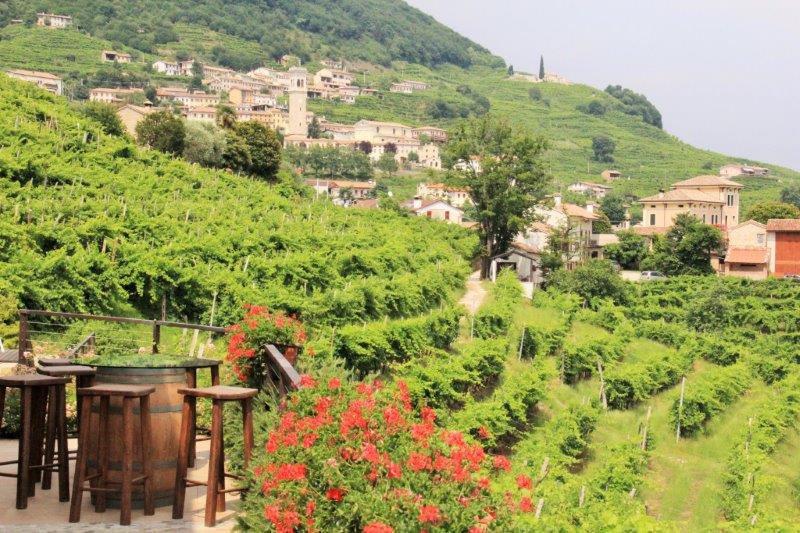
Amarone Wine: Expensive Italian Red Wine
The first time I heard of Amarone [pronounced Ah-ma-ROH-nay] wine was from an American couple at the Acetaia where we did a tour in Modena. His advice, “If you get the chance to try it don’t pass it up! It’s pretty special.” So the quest begins. Of course this requires some research! And guess where Amarone is from? Veneto, our next stop after Emilia Romagna! We are in luck!
As mentioned, the height of the tourist season in Italy, June, July, August, is not the height of wine production. Unfortunately no one was actively making wine and Amarone producers were no exception. So we had to settle for finding a good bottle of Amarone to taste it instead.
Making Amarone Wine
The production process for Amarone is rather unusual. The grapes are actually dried before being pressed to make wine. We thought this would make it a sweet wine or perhaps a desert wine, but it is not. The nose on the wine is very interesting as it has strong hints of raisins (dried grapes). The taste is quite complex. Not a lot of Amarone is produced as the production process is expensive due to the lengthy drying time and increased volume of grapes required to make a bottle. 2.25 pounds of grapes are required to make a normal bottle of wine versus 24 pounds of grapes for a bottle of Amarone. It also results in a rather expensive end product, best saved for special occasions.
Corvina, Rondinella, Molinara and others types of grapes are used to make Amarone. Grapes are typically dried on reed mats and the drying process, known as appassimento usually takes place from mid September to mid January. The drying process can last up to 120 days. Special facilities, which control temperature and humidity are required for drying to ensure the fruit does not begin to rot.
Amarone Wine in Veneto
The center of amarone production is Valpolicella, an area North of Verona. Quality Amarone will be from Valpolicella and contain one of the designations noted above, IGT, DOC or DOCG.
A bottle of Amarone wine is typically high in alcohol content, 14-16% by volume. It goes well with big meat meals- think steak, lamb, game or veal dishes. A bottle typically costs more than $40 retail. I am sure it would be much more if you found it in a restaurant.
Two other Italian wine products similar to Amarone: ripasso often referred to as “baby Amarone” and recioto. Ripasso which hails from the same wine producing region, Valpolicella, is red wine mixed with the pomace, or leftover skins and seeds from amarone production, to enhance the flavor. The price point is much lower, usually under $20 a bottle. Recioto is a dessert wine made using the same process to dry grapes as for amarone. It is a sweet wine and goes well with strong cheeses.
If you are there during wine season, a couple of producers to try include:
- Villa della Torre Allegrini 25, 37022 Fumane (Verona) – Italy, +39.045.6832070, ospitalita@allegrini.it www.allegrini.it
- Another winery with a restaurant and accomodation is Cantine Buglioni
Italian Grappa
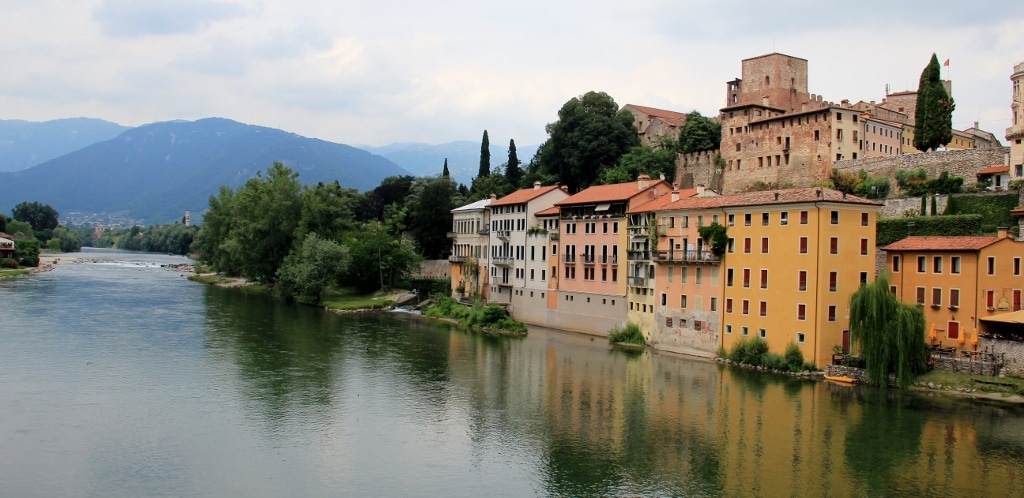 Have you heard of grappa? Maybe even tried it? Well that was us. We know what grappa is and have tried it on occasions, but my sum total knowledge of the spirit wouldn’t fill a thimble furthermore a shot glass. Well after a trip to Bassano del Grappa in Veneto, we know a lot more and are going to share what we learned.
Have you heard of grappa? Maybe even tried it? Well that was us. We know what grappa is and have tried it on occasions, but my sum total knowledge of the spirit wouldn’t fill a thimble furthermore a shot glass. Well after a trip to Bassano del Grappa in Veneto, we know a lot more and are going to share what we learned.
Bassano del Grappa is the home of you guessed it, grappa. Many distilleries are located in the area and there is a rich history of spirit production. Grappa is made using the “waste” from wine production. The skins and seeds, the pomace, from local wineries is used as the raw material for grappa.
Much like wine or whiskey, there are a number of nuances to “grappa”- it is not one size fits all.
The four most common types:
- Young grappa- bottling occurs nearly 1 year after distilling.
- Aromatic grappa- created from aromatic grapes like moscato or traminer.
- Aged grappa- matured in oak casks for at least 12 months, and often much longer.
- Flavoured grappa- infused with other flavours such as honey, blueberries, etc.
Artisan Grappa
Artisan grappa is made using what is known as a discontinuous cycle, commercial (or mass produced) g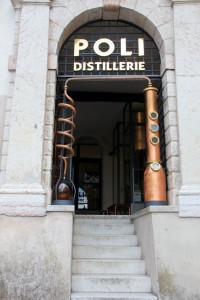 rappa is made using a continuous cycle. In the continuous cycle distilling proceeds without interruption and is cheaper. When this process was introduced in the 1960’s, it forced many artisan producers out of business (unfortunately a familiar story the world over) and today only about 90 of over 2000 artisan producers remain in Italy. Only about 20% of grappa is made following the traditional discontinuous process.
rappa is made using a continuous cycle. In the continuous cycle distilling proceeds without interruption and is cheaper. When this process was introduced in the 1960’s, it forced many artisan producers out of business (unfortunately a familiar story the world over) and today only about 90 of over 2000 artisan producers remain in Italy. Only about 20% of grappa is made following the traditional discontinuous process.
The discontinuous process requires the distiller to load pomace each time a “batch” or cycle begins. Due to the need for raw materials to produce grappa, the season for distilling grappa coincides with the wine making season, the months of September and October. The pomace is purchased from the winery and transported directly to the distillery.
Poli Grappa- Makers of Artisan Grappa
In the town of Bassano del Grappa, near the “Ponte Vecchio”, or old bridge, you will find the Poli Grappa Museum. The museum is open everyday 9.00-19:30 and is free. (Closed 1 January, 25 December and Easter.) It features a self guided tour explaining the history and process of making grappa. You can see many of the old stills that were used in production. Poli is a brand of artisan grappa made by the Poli family since 1898, thus spanning several generations. You can also taste any of their grappa products and purchase. We enjoyed the museum so much we decided we needed to visit the distillery itself in Schiavon, a town just outside Bassano del Grappa.
Touring the Poli Grappa Distillery
You need to make a booking for the tour, but this was quick and easy. There is a form on the website or you just email. The tour explains the entire process, takes you through the cellar, explains the end products (of which there are many) and allows you to taste anything you would like. It was informative, fun and great value (it was 3 eu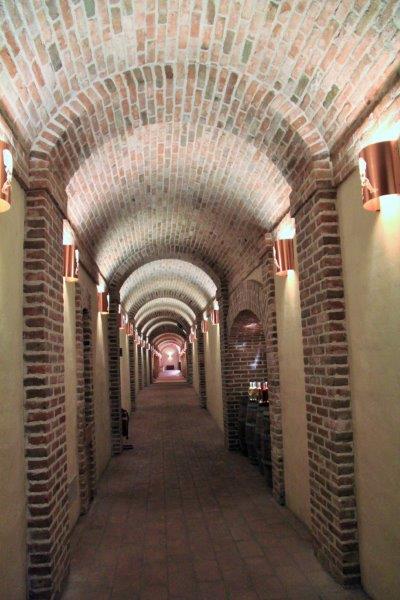 ro at the time of our visit.) There is also a museum at this site, open Mon-Sat 8:30-13:00, 14:00-19:00 and also free.
ro at the time of our visit.) There is also a museum at this site, open Mon-Sat 8:30-13:00, 14:00-19:00 and also free.
We were the only two people on our tour and although Alberto, our guide, had undoubtably led this tour many times, it was personal. Alberto is knowledgeable of the family, the distillery and grappa, answering all of our many questions. We also had the pleasure of meeting Jacob Poli, a member of the Poli family and responsible for operations. He took the time to come over and introduce himself, ask about where we were from and we had a nice conversation about exporting and the market for artisan spirits.
Hats off to him as this is just smart business, tourists have day jobs and lives outside of the fact they are on holiday. (For instance we run a food and travel blog!) Obviously we are interested in his products as we have taken the time to visit while on holiday. Many business opportunities and partnerships start this way. Unfortunately many businesses don’t view tourism in this same light and in our opinion miss out on valuable opportunities to educate and connect directly with their consumers. There are several other grappa distilleries in the area and although we contacted several indicating they offer tours, we did not even receive a reply.
Bassano Del Grappa
The town of Bassano del Grappa, located on the Flume Brenta (River) is a very scenic location and the town itself is worth a wander. A famous cheese of the area is Bastardo del Grappa, one of our favorites we discovered on this trip. For hikers there is outstanding hiking throughout this area including a long distance walk, TV1, The Panoramic Trail, running from Mount Grappa to Cansiglio. It traverses along the ridge line and offers spectacular scenery. The entire trail is 8-9 days of walking, covering 68 miles (112 kilometers), but day hiking sections is an option as well. Bike riding throughout this entire region is very common.
So as we come to the end of our post about Italian Wine, Grappa and Tiramisu: Unwinding in Veneto, here is a recipe for Tiramisu made with Grappa.
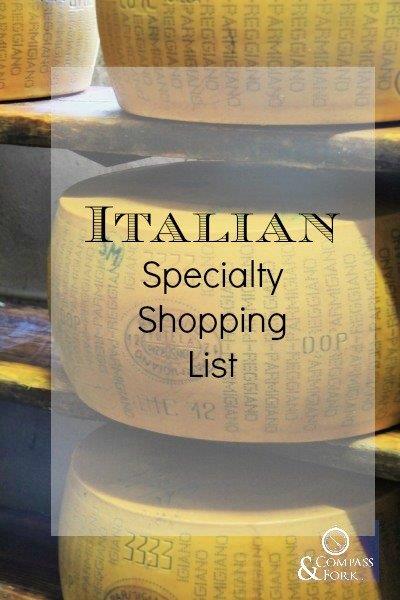
FREE PRINTABLE SHOPPING LIST
All the specialty ingredients you need to make the Italian recipes on Compass & Fork on one handy printable shopping list.
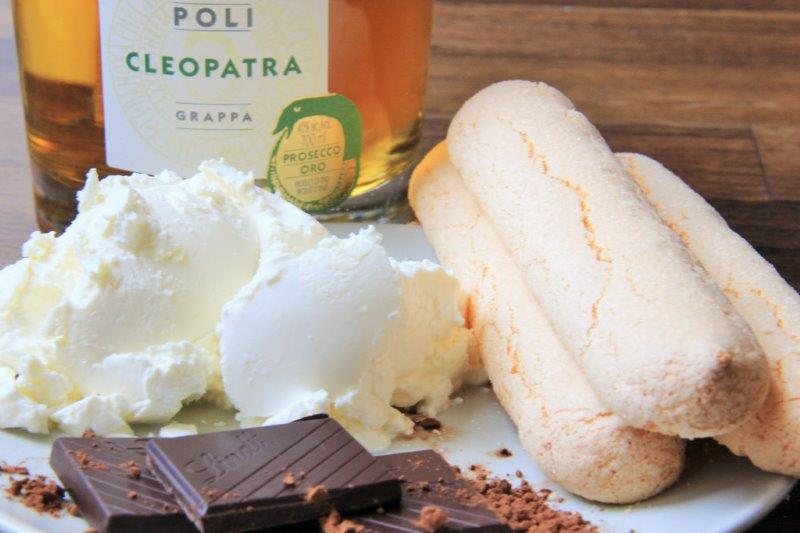
If you enjoyed Italian Wine, Grappa and Tiramisu: Unwinding in Veneto you might also enjoy our other content about the Veneto region:
And if you enjoy learning about local wines and spirits, try:
Tannat Wine One of the Best Reasons to Visit Uruguay
A Wonderful Day of Wine Tasting in the Barossa Valley
or
How to Make a Pisco Sour and What You Need to Know about Pisco
The Best Citron Liqueur you’ll ever Taste is on Naxos
If you have any questions, please leave us a comment below.(No URL required)
| Servings | Prep Time | Passive Time |
| 4people | 30minutes | 2hours |
| Servings | Prep Time |
| 4people | 30minutes |
| Passive Time |
| 2hours |
- 4 eggs separated
- 3 1/2 ozs caster sugar substitute with plain sugar
- 12 ozs marscapone
- 1 cup strong coffee cooled
- 1 fl oz grappa optional*
- 7 ozs savoiardi biscuits lady fingers*
- chocolate, dark good quality, grated*
|
Ingredients
Servings: people
Units:
|
- Beat the egg yolks with the sugar until well combined. When the mixture thickens, gently fold in the marscapone with a wooden spoon until creamy and consistent.

- Mix the coffee and grappa in a bowl. Quickly dip the biscuits in the coffee and grappa and put aside on a plate.
- Beat the egg whites until thick and stiff and gently fold into the marscapone mixture.
- Layer the soaked biscuits and marscapone mixture. Form 2 or 3 layers in the above sequence. Sprinkle the grated chocolate evenly over the last layer of marscapone cream.
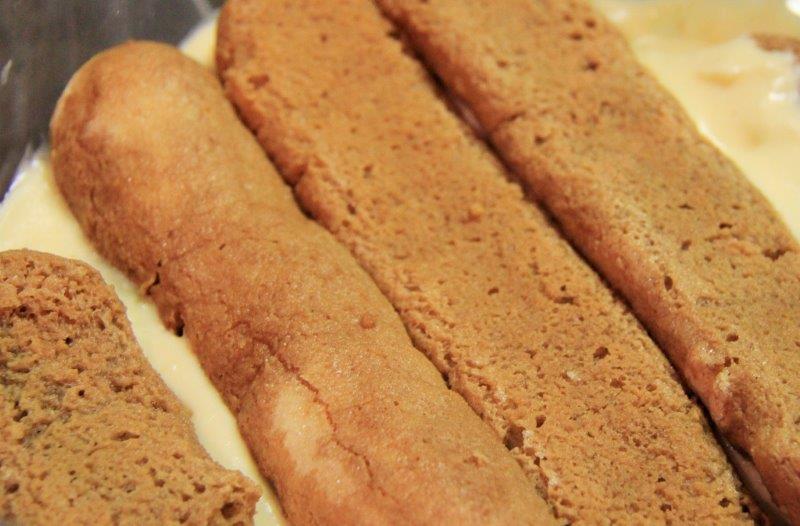
- Place the tiramisu into the fridge for at least 2 to 3 hours before serving.

The use of grappa is optional and may be substituted with Tia Maria, Kahlua or amaretto. It may be omitted altogether if you don't care for alcohol.
You can purchase savoiardi biscuits at better delicatessens or you can purchase savoiardi here.
Buy good quality, dark chocolate.


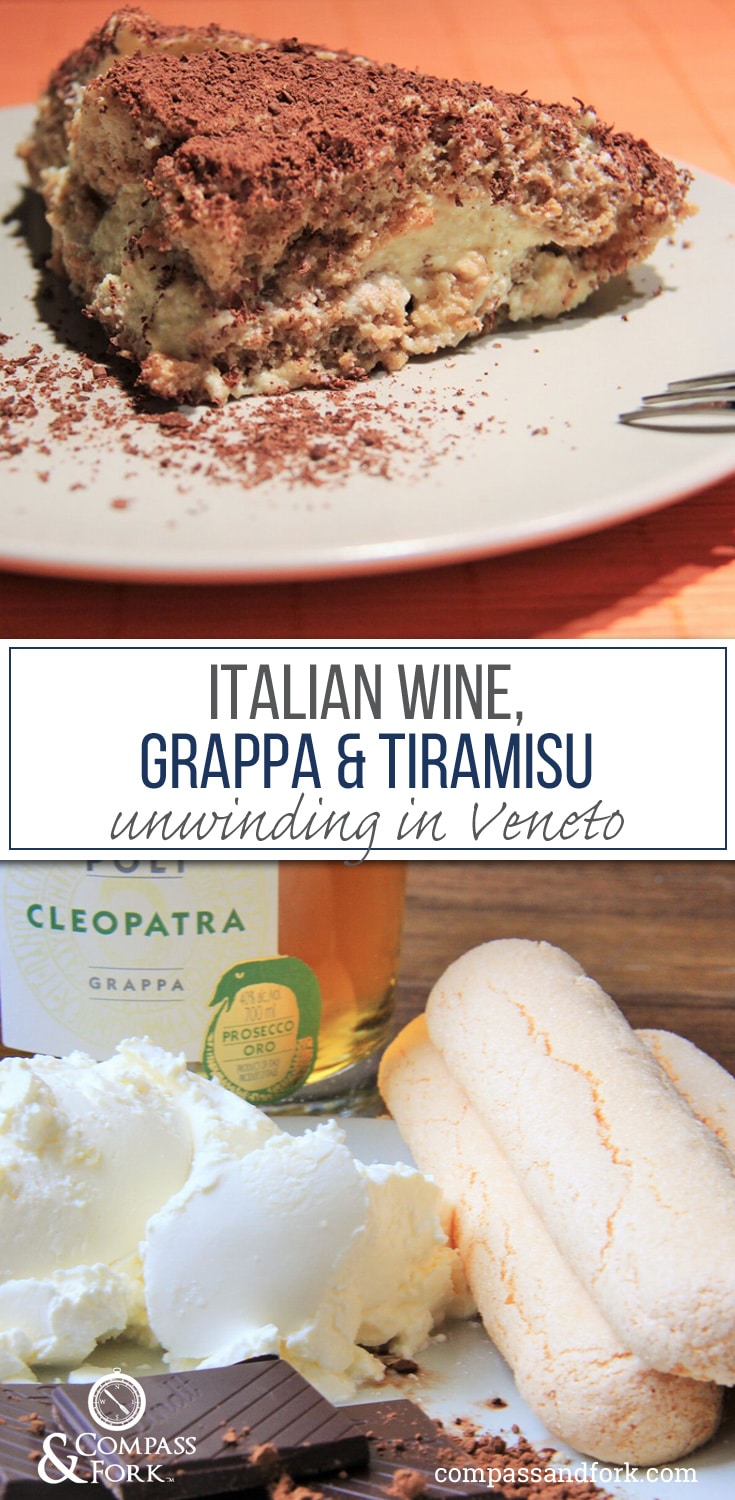
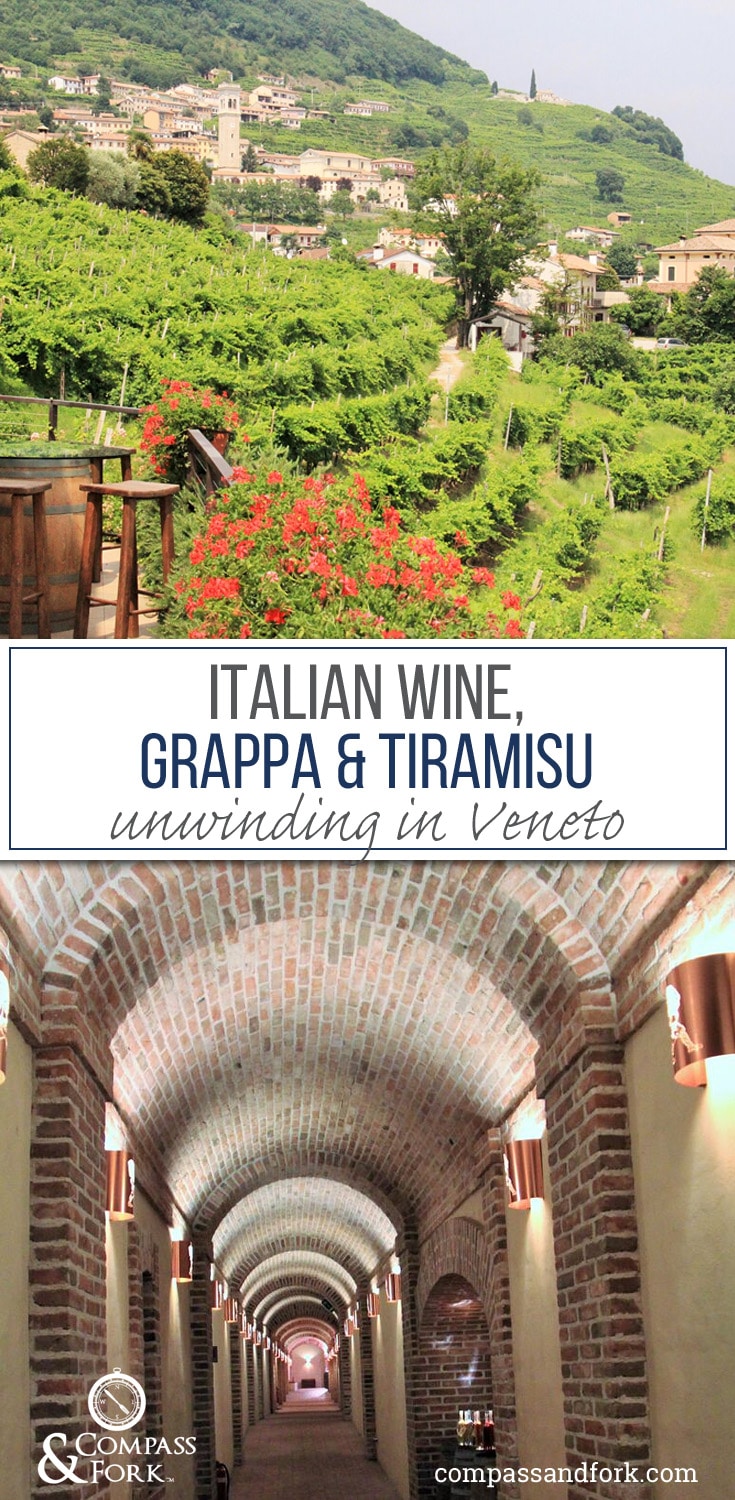

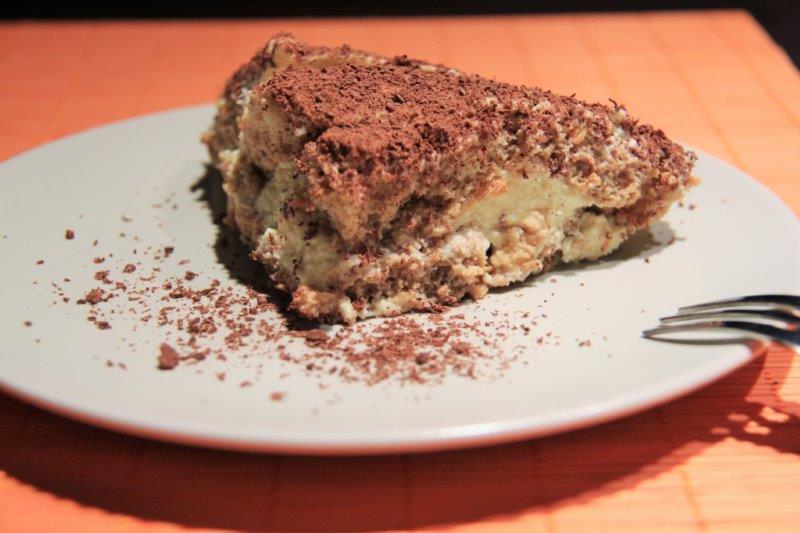
Luca Marchiori
Living in Italy, I love grappa as a digestivo after a meal. So interesting to see the photos of Bassano and your lovely spin on Tiramisù with grappa. Great idea! My favourite grappa is the oak aged barricata grappa. Deep yellow and full of flavour. I find grappa gets a rather bad press outside Italy, so well done for this highly informative article.
Editor
Thank you so much Luca. We really enjoyed our tour at the Poli distillery in Bassano and particularly their passion for their most excellent products. You might be right about grappa’s reputation outside Italy but we really enjoyed it especially as an after dinner digestivo. And we like to spread the word about it.
Fiona
I do love tira misu 🙂 I still with kalua though
Editor
Fiona, thanks for your comment. Nothing wrong with using Kahlua. We were putting an Italian spin by using grappa.
Lauren
What an extensive guide! This makes me want to pack up and head back to Italy right now!
Editor
Lauren, thanks for your kind comment. That’s exactly the reaction we aim for.
Tanja
Very informative! I’ve already known of the labeling of good quality wines with the abbreviations DOC and DOCG 🙂
Editor
Tanja, It is interesting how they label their wines. A bit different to South America which uses Reserva and Gran Reserva to denote quality.
Courtney {Alkeks Abroad}
I have only been to Rome in Italy, I would love to go back and visit the wine regions.
Editor
Rome is great also but nice to see some of the countryside!
Ruth - Tanama Tales
I am so excited about this post. My husband loves Tiramisu and it would be great to surprise him with a homemade one. The final product you present in here looks so delicious!
Editor
Thanks Ruth. Try it with grappa, you won’t be disappointed. And yes it was rather delicious as well.
Prash @ YummilyYours
Well written post and the tiramisu recipe at the end is a great finish as with any good Italian meal 🙂
Editor
Hi Prash. Thanks for your comment. Tiramisu is decadent. It’s just a good combination of ingredients. Cheers….Mark
whitney
Ok, well now I want to go to Italy!
Editor
Hi Whitney. Yes it is definitely a place worth visiting. Food and drink is very reasonably priced. Cheers….Mark
Christine | No Gojis, No Glory
Ugh…unwinding in Italy sounds like perfection right about now. BTW, I love Prosecco, but had no idea it wasn’t technically champagne :/ Well at least I know now! Thanks Mark
Editor
Thanks for your comment Christine. It can all be a bit confusing champagne, prosecco etc. We prefer the lighter taste of prosecco especially when it is warm. Cheers….Mark
Christine
I am always teetering on the brink of wanderlust for Italy and this post pushed me right over into that bittersweet longing. I have always wondered about the difference between prosecco and champagne and am so happy to know the difference between spumante and frizzante now, too. Prosecco is in my all time favorite aperitivo, the aperol spritz. Great post. Thanks for sharing.
Editor
Thanks for your comment Christine. We really love the “lighter” fizz of the frizzante style prosecco, especially in the warmer weather. Cheers….Mark
MyCookingSerects.com Krystallia Giamouridou
Love tiramisu (you can’t imagine…) I wish I had a large piece of that along with an espresso at an Italian garden patio he he
Editor
Hi Krystallia. Thank you for your comment. Who doesn’t like tiramisu, it is just a great combination of ingredients and a little bit decadent! And an espresso to accompany it. It is very Italian. Cheers….Mark
Priya
Beautiful place and lovely recipe for Tiramisu!
Editor
Thank you for your comment Priya. It is a lovely place. Green and lots of beautiful hills. I was also surprised how easy it was to make the tiramisu.
Cheers….Mark
Cristie @ Little Big H
I want to go to Italy after looking at your gorgeous photos. The tiramisu sounds wonderful.
Editor
Hi Cristie. Yes Italy is well worth a visit, especially if yo love your history and like to eat!
Cheers….Mark